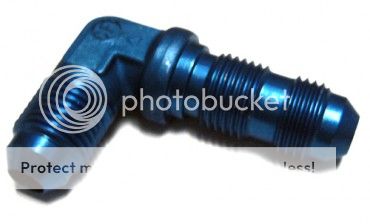Van's Air Force
You are using an out of date browser. It may not display this or other websites correctly.
You should upgrade or use an alternative browser.
You should upgrade or use an alternative browser.
Fuel line firewall fittings
- Thread starter s10sakota
- Start date
Auburntsts
Well Known Member
I used steel.
I used steel for all of the fuel line connections fwf.
snopercod
Well Known Member
AN960 washers
I used steel fittings, standard AN960 flat washers, and steel AN924 nuts. One thing I would like to mention is that in order to keep the bulkhead fitting from spinning, you will need will need a backup wrench on the back side of the fitting. Be thinking ahead about how you are going to get a backup wrench on the back side while you are torquing the B-nut on the front side. Also, if you are going to install sound insulation on the aft of the firewall, that can block access. Like they say, PLAN AHEAD...what washers did you use?
Also, if you are going to install sound insulation on the aft of the firewall, that can block access. Like they say, PLAN AHEAD
Don't apply sound insulation to the cabin side of a firewall. Doing so creates a flame transfer system, defeating the reason for having a firewall in the first place.
Toobuilder
Well Known Member
Don't apply sound insulation to the cabin side of a firewall. Doing so creates a flame transfer system, defeating the reason for having a firewall in the first place.
+1
Thanks largely to your "foot stomping" of this issue Dan, I have spent considerable time scraping the foil and foam insulation off my Rocket (applied by the builder, not me).
I also did a burn test on the remnants and WOW! what an eye opener!
Not only did it burn readily, but it produced enough acrid smoke that I almost passed out watching it burn in the yard. Even without fire, I would almost certainly been overcome immediately in an enclosed cabin.
rapid_ascent
Well Known Member
I know some will say no need and that I unnecessarily added weight but I made my doubler out of stainless. I don't want the aluminum spacers melting and the fitting becoming loose. I also plan the run stainless tubing back to the fuel filter.
David Paule
Well Known Member
Here's the requirement for certified airplanes:
"23.1183 Lines, fittings, and components.
(a) Except as provided in paragraph (b) of this section, each component, line, and fitting carrying flammable fluids, gas, or air in any area subject to engine fire conditions must be at least fire resistant...."
There's considerably more to it than this excerpt.
Dave
"23.1183 Lines, fittings, and components.
(a) Except as provided in paragraph (b) of this section, each component, line, and fitting carrying flammable fluids, gas, or air in any area subject to engine fire conditions must be at least fire resistant...."
There's considerably more to it than this excerpt.
Dave
snopercod
Well Known Member
Flame Retardant per FAR 25.853a Appendix F, Pt1
That was prudent since you didn't know what the original builder used. The "Super Soundproofing" that ACS sells is flame retardant per FAR 25.853a Appendix F, Pt1. Whether that's good enough, I don't know (and hope to never find out). All I do know is that without the soundproofing, ATC was unable to reliably hear my transmissions due to the high cabin noise.I also did a burn test...
The "Super Soundproofing" that ACS sells is flame retardant per FAR 25.853a Appendix F, Pt1. Whether that's good enough, I don't know (and hope to never find out).
Lemme help you. It's not.
All I do know is that without the soundproofing, ATC was unable to reliably hear my transmissions due to the high cabin noise.
What were you flying?
snopercod
Well Known Member
See my avatar.What were you flying?
See my avatar.
A Lancair 235? A 235 has a 1/4" ply firewall with a fiberfrax and stainless sheet overlay on the engine side. It may be the quietest in sport aviation.
FWIW, you can probably add sound insulation to a Lancair 235 firewall without too much risk, assuming you don't get it too close to the pass-through fittings; they are local hot spots.
A stainless sheet RV firewall is an entirely different animal.





